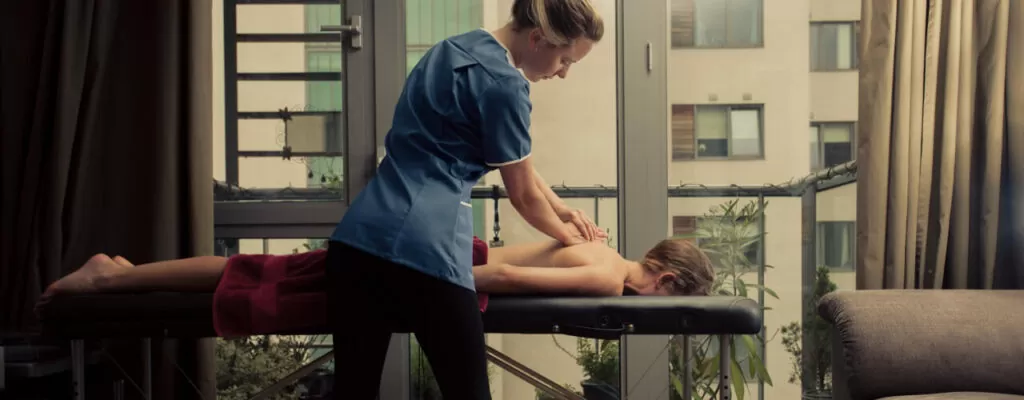You don’t have to live a life of pain.
Most Americans will suffer from temporary back pain at some point in their lives. When back pain is not temporary, however, it becomes a major quality of life issue. The American Physical Therapy Association states that back pain is the most commonly experienced form of pain for Americans.
A surprising fact you may not know, is that one in every four Americans has sustained some sort of back pain in the past three months! This just goes to show how common back pain truly is.
The good news is that you don’t have to live with back pain permanently. There are solutions available to you, starting with reading this blog and contacting our clinic for help!
Taking a proactive approach like working with one of our in-home physical therapists can help you find back pain relief at long last. Contact our office for more information on how physical therapy can relieve your back pain.
Why does back pain occur?
Did you know that the World Health Organization estimates that approximately 149 million workdays are lost due to back pain? It’s the sad truth.
60-70% of people across industrialized nations experience back pain, which can greatly hinder daily life and limit you from participating in certain tasks and activities that you enjoy. If left untreated, back pain can also progress into more serious health issues.
There are three main types of back pain:
- Chronic Back Pain: If back pain lasts longer than three months without subsiding, it is classified as chronic.
- Recurrent Back Pain: This occurs when acute back pain goes away for a while, but then comes back periodically.
- Acute Back Pain: Acute back pain is the most common type. This is a temporary pain that goes away in less than three months.
Back pain is rarely a severe issue and typically goes away on its own. Recurrent and chronic pain, on the other hand, may indicate a more serious health condition.
Osteoporosis, degenerative disc disease, a herniated disc, fractures, and lumbar spinal stenosis are just a few of the physical problems that may be causing your back pain.
Diagnosing back pain
The first step in working with an in-home physical therapist is to talk about the symptoms you are experiencing. Your therapist will also go through your medical history and see if there have been any previous accidents or conditions that could be leading to your current discomfort. In addition, the physical therapist will perform an examination to determine how you can move and act as a result of your back pain.
Some tests may be performed during the evaluation process to look for signs of more severe conditions. If your physical therapist believes a major health problem is causing your back pain, you will most likely be referred to a doctor for further examination. In the vast majority of cases, this will not be needed.
Typical physical therapy treatment for back pain
A tailored course of home-based physical therapy will be outlined for you once your back pain has been diagnosed. Back pain treatments differ depending on the diagnosis, the age, weight, physical ability, and other factors.
Any of the following treatments can be included as part of the treatment plan:
- Posture work to provide better support for your back
- Manual therapy and spinal manipulation to improve joint mobility and relieve tissue pain
- Stretching and strength building exercises
- Ice or heat treatments for pain relief
- Education on how to take better care of your back, such as proper methods of lifting, bending, sitting, and sleep positions
What can I expect with physical therapy for back pain?
Over the course of your work with an in-home physical therapist, your progress will be monitored to ensure that you are recovering.
The intention is to get rid of the back pain so you can resume your daily routine. One of the most important aspects of working with a physical therapist is learning movement and everyday activity techniques that can help you avoid recurrent pain.
Your trainer, for example, will demonstrate appropriate posture exercises that you can use at home, at work, or when participating in recreational activities.
You will also learn how to keep up a regular exercise regimen to keep your supportive muscles strong, which will prevent the back pain from coming back. If your weight is contributing to your back pain, you will learn nutritional advice in addition to exercise to control your weight and keep back pain at bay.
Call our office for more information today
The key is to be proactive in standing up to your back pain. If the pain lasts longer than three months, it probably won’t go away on its own.
Call Holistic Physical Therapy today to schedule your first appointment with an in-home physical therapist!
Sources:
- https://www.moveforwardpt.com/SymptomsConditionsDetail.aspx?cid=d0456c65-7906-4453-b334-d9780612bdd3
- https://www.who.int/medicines/areas/priority_medicines/Ch6_24LBP.pdf
Tags: Natural Treatment, Natural Pain Relief, Aches and Pains, Chronic Pain, physical therapy, physical therapists, nutrition, physical activity, opioids, Rehabilitation, physical health, Joint pain


